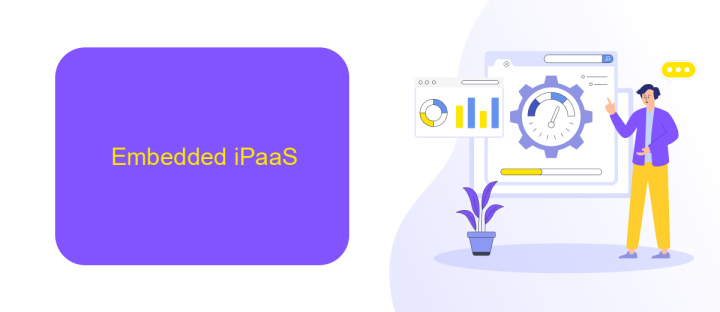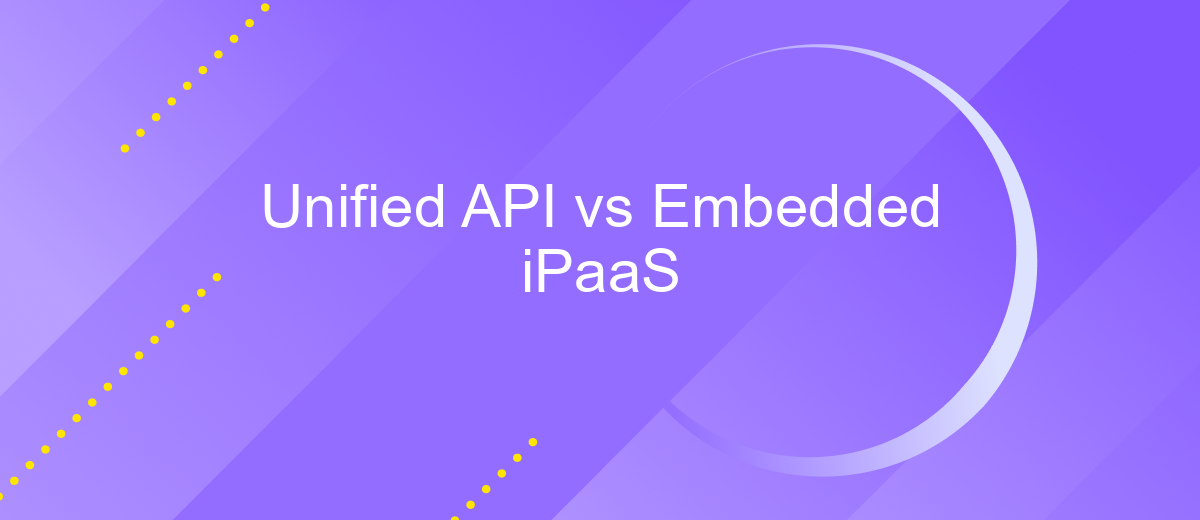Unified API vs Embedded iPaaS
As businesses increasingly rely on diverse software solutions, integrating these systems efficiently becomes crucial. Two popular approaches for achieving seamless integration are Unified APIs and Embedded iPaaS (Integration Platform as a Service). This article explores the key differences, benefits, and challenges of each method, helping organizations determine the best strategy to streamline their operations and enhance productivity.
Unified API
Unified API provides a single, consistent interface for developers to interact with multiple services, eliminating the need to understand and integrate with each individual API. This approach simplifies the development process and accelerates time-to-market for applications.
- Streamlined integration process
- Reduced development time
- Consistent data formats
- Centralized API management
- Improved scalability
Services like ApiX-Drive further enhance the benefits of Unified API by offering tools to automate and manage integrations effortlessly. With ApiX-Drive, businesses can connect various applications without writing extensive code, ensuring seamless data flow and operational efficiency. This makes it easier to maintain and scale integrations as business needs evolve.
Embedded iPaaS

Embedded iPaaS (Integration Platform as a Service) offers a streamlined solution for businesses looking to integrate various applications and data sources seamlessly. Unlike traditional iPaaS, which often requires extensive setup and maintenance, embedded iPaaS simplifies the process by embedding integration capabilities directly into the software. This allows organizations to quickly connect disparate systems, automate workflows, and enhance operational efficiency without the need for specialized IT skills.
One notable example of an embedded iPaaS solution is ApiX-Drive. This platform enables businesses to set up integrations effortlessly, providing pre-built connectors for a wide range of applications and services. With ApiX-Drive, users can automate data transfer, synchronize information across different platforms, and manage integrations from a single interface. This reduces the complexity and time required to implement integrations, allowing businesses to focus on their core activities while ensuring their systems work harmoniously together.
When to Use Unified API

Unified APIs are a powerful tool for businesses looking to streamline their integration processes. They are particularly useful when you need to connect multiple applications and services quickly and efficiently. Instead of dealing with each service's unique API, a unified API provides a single interface to interact with various services, saving time and reducing complexity.
- If you have multiple applications that need to communicate with each other and require frequent updates.
- When your development team is small and you need to maximize productivity by minimizing the learning curve for different APIs.
- If you want to reduce the maintenance burden of managing multiple API integrations.
- When you need to scale your operations and integrate new services rapidly without extensive rework.
For businesses looking to simplify their integration tasks, services like ApiX-Drive can be invaluable. ApiX-Drive offers a unified API solution that enables seamless integration across a wide range of applications, ensuring that your business processes remain efficient and agile. By leveraging such tools, you can focus on your core business activities while leaving the technical complexities of API management to the experts.
When to Use Embedded iPaaS

Embedded iPaaS (Integration Platform as a Service) is ideal for organizations that require seamless integration of multiple applications and services without the need for extensive coding or development resources. This approach allows businesses to connect disparate systems and automate workflows efficiently.
One of the key advantages of using embedded iPaaS is its ability to simplify complex integration processes. With tools like ApiX-Drive, companies can set up integrations quickly and manage them easily through a user-friendly interface, eliminating the need for specialized IT skills.
- Automating repetitive tasks and workflows
- Connecting multiple SaaS applications
- Reducing development time and costs
- Enhancing data synchronization across platforms
Embedded iPaaS is particularly beneficial for small to medium-sized enterprises that need to scale their operations without investing heavily in custom integration solutions. By leveraging platforms like ApiX-Drive, businesses can achieve faster time-to-market and improve overall operational efficiency.
Conclusion
In the debate between Unified API and Embedded iPaaS, both approaches offer unique advantages for businesses seeking to streamline their integration processes. Unified APIs provide a simplified interface for developers, allowing them to connect multiple services through a single, consistent API. This can significantly reduce the complexity and time required for integration. On the other hand, Embedded iPaaS solutions offer a more comprehensive and scalable approach, enabling businesses to manage a wide range of integrations with minimal coding and maintenance efforts.
Ultimately, the choice between Unified API and Embedded iPaaS depends on the specific needs and resources of the organization. For businesses looking for a quick and straightforward integration solution, Unified APIs may be the ideal choice. However, for those requiring a more robust and flexible platform, Embedded iPaaS services like ApiX-Drive can offer extensive capabilities to automate workflows and manage integrations efficiently. By carefully evaluating the pros and cons of each approach, organizations can make an informed decision that best aligns with their integration strategy and long-term goals.
FAQ
What is the main difference between a Unified API and an Embedded iPaaS?
Which solution is easier to implement for small to medium-sized businesses?
How do Unified APIs and Embedded iPaaS handle data security?
Can I use these solutions to automate workflows without extensive coding?
What kind of support can I expect when implementing these solutions?
Routine tasks take a lot of time from employees? Do they burn out, do not have enough working day for the main duties and important things? Do you understand that the only way out of this situation in modern realities is automation? Try Apix-Drive for free and make sure that the online connector in 5 minutes of setting up integration will remove a significant part of the routine from your life and free up time for you and your employees.

